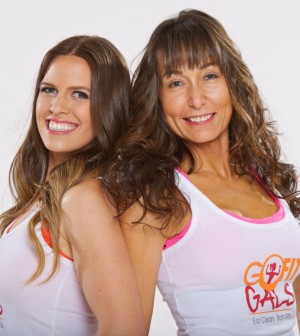- Mothering in a Fractured TimePosted 1 week ago
- Beneath the Surface: Revealing Life’s Goals nurtured from a Spiritual SeedPosted 2 weeks ago
- How We Kept Marital Peace while Traveling the World with Our KidsPosted 3 weeks ago
- How I Coped with Feeling Lost in a Changing SocietyPosted 3 weeks ago
- The Unexpected Liberation of a Butt DialPosted 2 months ago
- Why is France making abortion a constitutional right?Posted 2 months ago
HIT Workouts - What Are They & How To Do Them

By the Go Fit Gals
Last March was the annual summit for the American College of Sports Medicine (ACSM). These guys are the largest organization for sports medicine and exercise science and it’s this institution that helps to both advance and integrate science as it applies to physical fitness and sports medicine.
In other words, when they speak we should listen.
At the summit, one of the trending topics was high intensity training, otherwise known as HIT.
Presented as confirmed and concise science was that high intensity training was far more superior than continuous steady-state exercise for physiological benefits.
What’s In It For Me?
What the heck does that mean for you and I? It means that intense, yet shorter, workouts will elicit far greater returns to our aerobic and anaerobic fitness, our ability to burn calories both during and after the workout (called EPOC), and it achieves a far better fat burning result.
High intensity training will also stimulate our muscle-building hormones like growth hormone and IGF-5, putting our bodies into the perfect state to build lean muscle mass.
How To Start
When incorporating a HIT workout into your regime, we recommend that you first start on a treadmill with a heart rate monitor on. You need to understand and feel how hard you need to work – and a treadmill is one of the easiest ways to control your environment.
To train intensely the recommended training heart rate is 85% of your maximum. Note this is not a heart rate that most people are used to. This will be uncomfortable and challenging. However, on the flip side you only need to be at that heart rate for a short duration.
A HIT workout cycles between periods of intense exercise and periods of active recovery. These are called intervals and each intense interval can last anywhere from 20 seconds to two minutes (max), with your active recovery time usually double whatever work time you choose.
How long you choose to do a HIT is up to you and your current level of fitness. Beginners may want to start with 4-10 minutes, working themselves up to the max of 30-40 minutes.
But, I’m Old – Should I Be Doing This?
Don’t think that this is just for athletes, either. Anyone can perform a HIT workout. It does not matter what your current level of fitness is or your age.
What changes is how fast you go. A fit person may have to increase their treadmill speed to 10.0 mph (to achieve their 85% target), while a new exerciser may only need to be at 3.0mph with a 4% hill to reach theirs. Wear a heart rate monitor and listen to your body.
Once you get a feel for what intensity you need to be at to perform a HIT workout, start adding this principle to other types of exercise.
Most of our workouts on YouTube are HIT workouts using body weight, or body weight and dumbbells.
HIT workouts are also extensively used in our diet and nutrition plans as well and this is one of the many reasons that we are able to achieve great results for our members – and members of all ages and levels of fitness.
Give a HIT workout a try and start seeing results once again with your exercise program.
Click here for our Holiday HIIT Workout.
The Go Fit Gals are your experts in fitness and nutrition for women from new mommies to menopause. They provide the coaching and the inspiration to get their members strong, healthy and confident through our unique online programs based on eating clean and training dirty.







